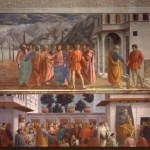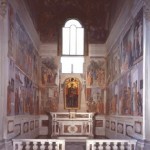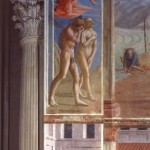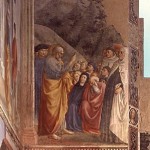In the Church of Santa Maria del Carmine is housed one of the highest examples of painting of all times: the frescoes of the Cappella Brancacci, painted by Masolino and Masaccio and, after the latter’s death, completed by Filippino Lippi.
The church and the convent of Santa Maria del Carmine were built as the seat of the Carmelite friars in the second half of the 13th century, thanks to the testamentary bequest of Cione di Tifa di Rinieri Vernacci, father of Petrello, the Ghibelline who, in 1279, signed the peace treaty with the Guelphs in the old piazza.
The construction of the church, overlooking the spacious piazza, had its beginning in 1268 and was concluded a good two centuries later, in 1476. Masaccio had depicted the church’s 1422 consecration in the cloister, but the fresco, also known as La Sagra, was lost, probably during an architectural renovation between 1598 and 1600.
The church presents a medieval structure and generous traces of its Romanesque gothic origin are preserved on its sides. The aspect attained in the second half of the 1400’s remained unchanged for at least a century, with the bell tower (reconstructed after a fire in 1771) and the unfinished façade as we see it still today. Many architects participated in the work but the paternity of the original drawing is traditionally attributed to Arnolfo di Cambio, or to his disciple, Master Lapo. Once completed, the majestic complex and its maintenance were entrusted to the Carmelite friars and to the rich families who had obtained the patronage of the chapels.
The Cappella Brancacci, situated in the right wing end of the transept, was built in 1386 at the wishes of Antonio Brancacci. Beginning in 1422, the frescoes on the walls were commissioned by Felice Brancacci, an important political bigwig in the Florence of the early 1400’s and patron of the Cappella.





